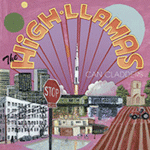|
|
 |
Dusted Reviews
Artist: The High Llamas Album: Can Cladders Label: Drag City Review date: Apr. 26, 2007 |

|
|
|
 |
Much like fellow Scot Momus, Sean O’Hagan of the High Llamas is a pop music semiotician. Intentionally or not, he’s at his most compelling when he revels in the artifice of his own compositions. Can Cladders, the band’s string-laden eighth album, is just as much at ease with this as its predecessors. The album’s 13 insubstantial tracks make no concessions to contemporary ideas of ‘substance’ in pop music: they are exercises in style so formal they’re almost French. O’Hagan clearly delights in this formalism at the same time that he remains resolutely un-academic, relying on an established set of correlations between sound and affect. In this sense, it’s incorrect to say, as many reviews have, that The High Llamas are dominated by Brian Wilson’s influence. The band is not any more influenced by a particular artist than, say, the Muzak/MOR piped into grocery stores and office buildings in the 1970s was ‘influenced’ by the major pop artists of the time. Can Cladders proves, if nothing else, that the band’s approach is less music-as-collage than an attempt to recover the melodic wholeness of another era.
Here, the artists compared above begin to diverge. Both deal in musical time-travel, but while Momus might write a song about A Clockwork Orange (see “The Symphonies of Beethoven” from his Little Red Songbook), O’Hagan quickly passes over an oblique reference to a “milk bar” in “Rollin’,” one of Can Cladders’ strongest tracks, as if rushing to get to the song’s outsize chorus. “We say hi to the rivers and the mountains,” O’Hagan sings in a musical landscape that looks not unlike Henry Nilsson’s The Point, “We say hi-hi-hi-hi-hi.” For all its flat affect and avowed vapidity, the song opens up to narrative in a way that can make you think you’re in Milo’s passenger seat in The Phantom Tollbooth.
But speaking of space and scale in The High Llamas’ music is a question of sprawl. The collaged cityscapes that grace the covers of both this album and Gideon Gaye, the band’s debut LP, are a perfect visual accompaniment for The High Llama’s impressively consistent, if unsurprising project: making the familiar gently disorienting. Like David Hockney’s Los Angeles paintings, the most stylized touches here — by emphasizing how we see and not just what we see — convey how little information we need to perceive something vast: we simply fill in the gaps with familiar structures. In a way, The High Llamas’ career has been an exercise in leaving this task up to the listener. Even counterintuitive decisions, like anchoring the woozy, bright groove of “Cove Cutter (Hills and Fields)” to a rigid, primitive drum machine pattern work in their favor.
It may be enough to say that The High Llamas are guided by texture rather than text. In any event, it’s difficult not to marvel at the depth of field The High Llamas evoke in Can Cladders. As the tongue-in-cheek response to Damien Hirst contained in the album’s artwork suggests, these are (deliberately) imperfect interventions, much as they may try to be clinical.
By Brandon Bussolini
|







